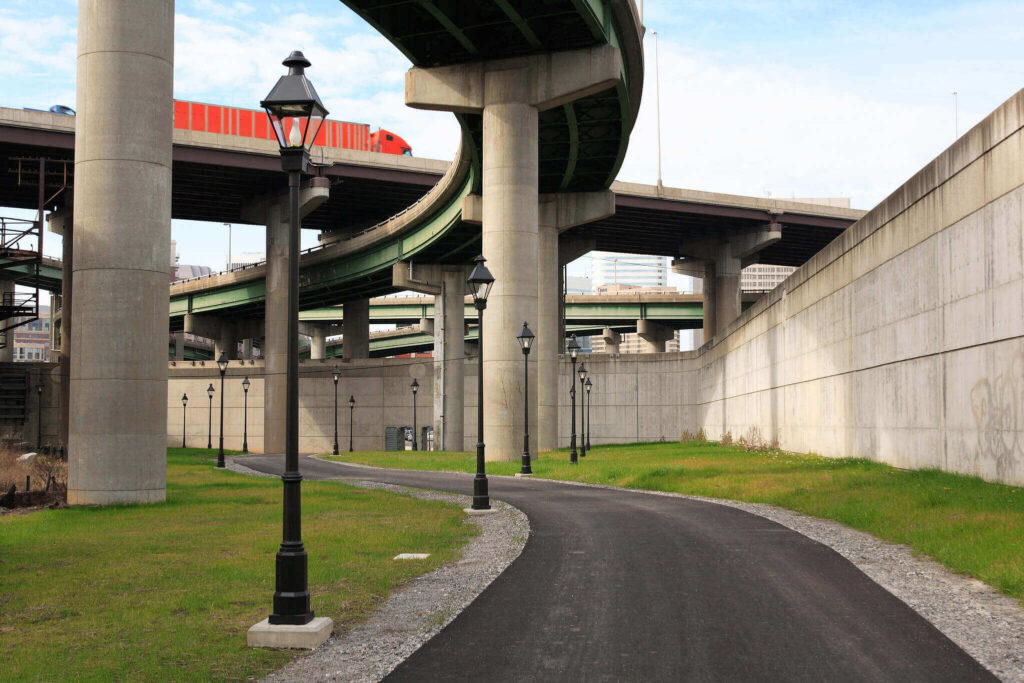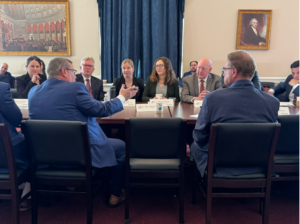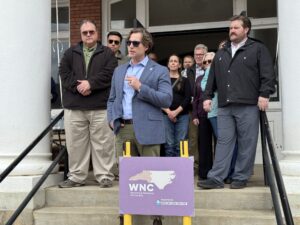November 15, 2022
—
The passage of the Infrastructure Investment and Jobs Act gives communities a unique opportunity to upgrade or improve infrastructure against flooding — especially as communities face stronger storms and rising seas.
When disasters strike, damages can cost communities billions of dollars. So when building or upgrading infrastructure, governments must consider the impacts of future disasters like floods. Doing so may increase upfront costs but can spare communities from some of the crippling costs of disaster recovery.
That’s why leading up to the infrastructure bill becoming law, AFC engaged with federal lawmakers on a dozen comprehensive priorities that strengthen and fund resilience, disaster preparedness, and flood-risk reduction programs in the United States.
Many of those priorities were included in the infrastructure law, and now state and local leaders can start to apply for programs to fund their own resilience projects. Not only do these flood resilience projects save lives, but many of these up-front investments can also save communities money in the long run.
As communities navigate the infrastructure law and identify funding that works for them, we’ll offer real-world examples of infrastructure projects specifically designed to be flood resilient — and how these projects make economic sense, too.
Communities can save $5–7 for every $1 spent on resilience
First, let’s start with some data. Oft-cited research by the National Institute of Building Sciences (NIBS) finds that for every $1 spent on resilience, communities save $5 to 7 in disaster response and recovery. But what does that mean in the context of floods?
The NIBS report finds that building above a base flood elevation, for example, can save $6 for every $1 spent. Specifically, building 1 foot above the 100-year flood elevation adds roughly “$90 million of construction costs per year for new construction, while saving $550 million”, largely through property damage avoided.
Additionally, the research puts forward the economic benefits of elevating buildings on riverine floodplains by five feet, rather than one foot. Though elevating buildings is a significant undertaking for a community, spending $900 million up front on such projects can avoid $4.2 billion in losses — or $5 saved for every $1 spent, according to NIBS.
Flood resilience in action
But such gains are not just hypothetical. In previous years, communities across the country have invested in flood resilience solutions that suit their needs, as a result, both increasing their flood protection and saving money.
The examples given have all been at least partially funded by the federal government. They’re also snapshots of what communities can do with federal investments like those included in the Infrastructure Investment and Jobs Act.
Floodwall in Greenville, North Carolina
In 1999, heavy rain from Hurricane Floyd flooded the water treatment plant in Greenville, North Carolina, under nine feet of water. Using a $4.8 million grant from the Economic Development Administration, the facility raised its surrounding floodwall.
When Hurricane Matthew hit in 2016, the new floodwall protected the facility from flooding. The floodwall prevented an estimated $212 million in direct damages and other disruptions to the community, such as loss of service and environmental clean-up.
Elevated rail in Coralville, Iowa
In 2010, the city of Coralville, Iowa, received a $7.8 million grant to elevate rail and nearby trails next to the Iowa River. The elevated railbed serves to protect trains along the line, while the elevated trails can also act as levees to protect buildings along the city’s Iowa River shoreline.
The lowest point of the original railbed was at the same elevation as the outermost limit of the FEMA-mapped 100-year floodplain, and two feet lower than the boundary of the 500-year floodplain. Elevating the rail four feet higher than the 500-year floodplain is conservatively estimated to save Coralville $17 million in future disaster impacts.
Relocation in Grand Forks, North Dakota
Following the 1997 Red River Flood, the U.S. Department of Housing and Urban Development helped the city of Grand Forks in eastern North Dakota fund a major relocation project. The program included voluntarily acquiring more than 700 properties, relocating salvageable single-family homes, and demolishing all unsafe structures in neighborhoods along the bank of the Red River.
This program allowed Grand Forks and neighboring East Grand Forks, Minnesota, to establish a greenway of roughly 2,200 acres of natural space between the levee system and the banks of the river. Though some community members were initially skeptical about the program, many came around, especially after seeing its effects: While the Red River has flooded multiple times in the last 25 years, damage has been greatly minimized by the absence of structures inside the floodplain.
Elevated Houses in Mandeville, Louisiana
In 1993 Mandeville, which sits across Lake Pontchartrain from New Orleans, increased its building elevation standards to require newly constructed or significantly renovated buildings to be one foot above the 100-year flood elevation — or the expected limit of floodwaters should a severe storm (with the intensity of storm that has a 1-in-100 chance of striking on any given year) hit the community.
After Hurricane Isaac caused severe flooding in 2012, FEMA conducted a Losses Avoided Study in Mandeville and other nearby communities impacted by the storm. The study included an analysis of the storm’s flood impacts on 14 homes in Mandeville that had been elevated prior to Isaac. Although elevating the buildings initially cost about $1.5 million, FEMA estimated a 74% return on investment after Isaac, with a savings of $79,000 in avoided damages per structure.
What leaders can do next
The infrastructure law added resilience measures as an eligible use of funds for billions of dollars of annual federal investments. Now it’s up to state and local governments to take advantage of this new project flexibility though the law.
When planning and selecting projects, communities should prioritize the resilience of infrastructure, if the long-term savings described above are to be realized. And to support communities investing in resilient infrastructure, the American Flood Coalition has several resources available:
- Our Adaptation for All guide highlights 26 approaches broken down by costs, benefits, and other considerations to help communities of any size evaluate how specific approaches can fit into their flood resilience strategies.
- Our Flood Funding Finder simplifies and filters the federal funds that are available, helping communities identify the right programs to fund flood resilience.
- On our blog page, we broke down the resilience provisions in the infrastructure law, and we also created a checklist of how to prepare for infrastructure funding.
As communities consider new infrastructure projects, resilience should be a top priority. Though such an approach may increase up-front costs, the savings are clear in the long run.
—
This post was authored by Matt Rowland, AFC Policy Director; Gian Tavares, AFC Senior Strategy Associate; and Brandon Pytel, AFC Communications Associate.
Credit for photo at top: Virginia Department of Transportation






